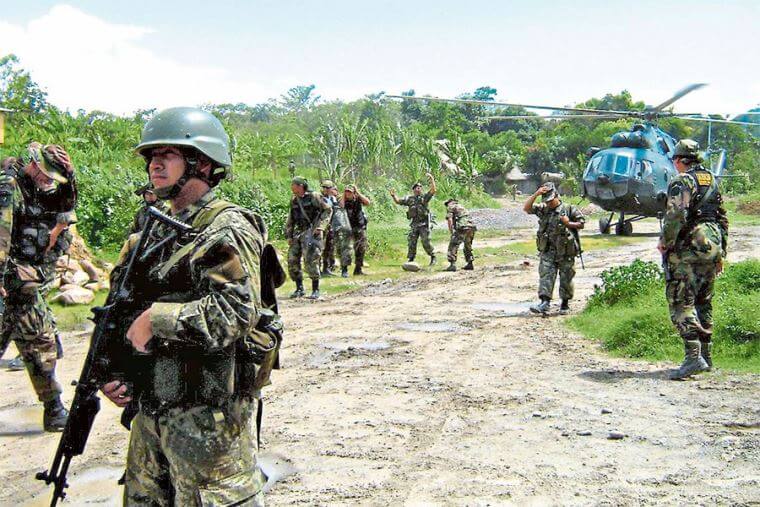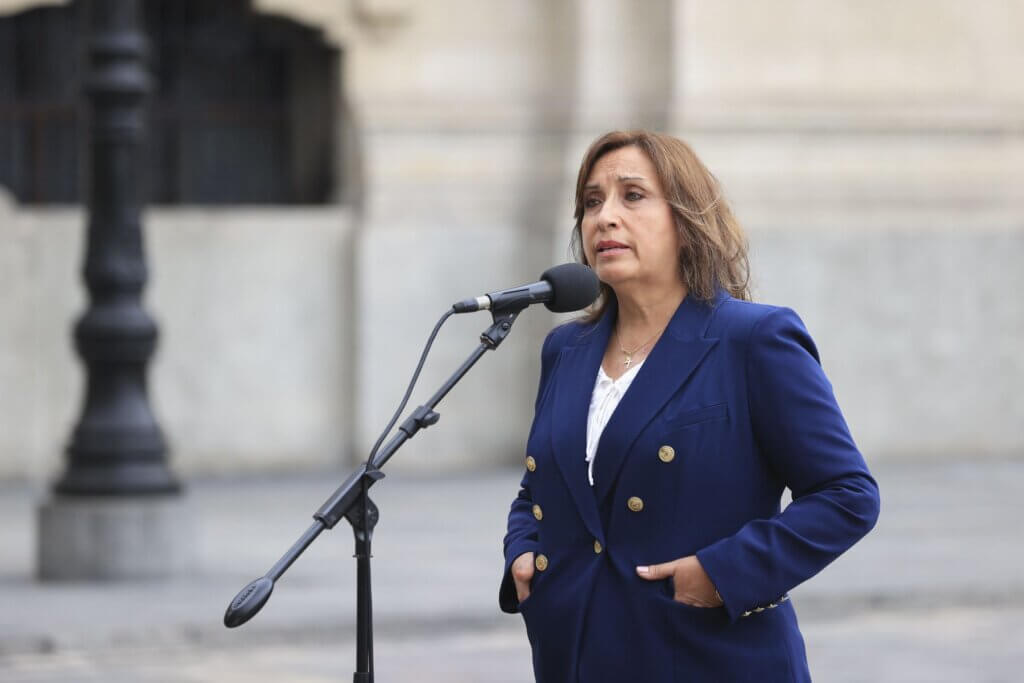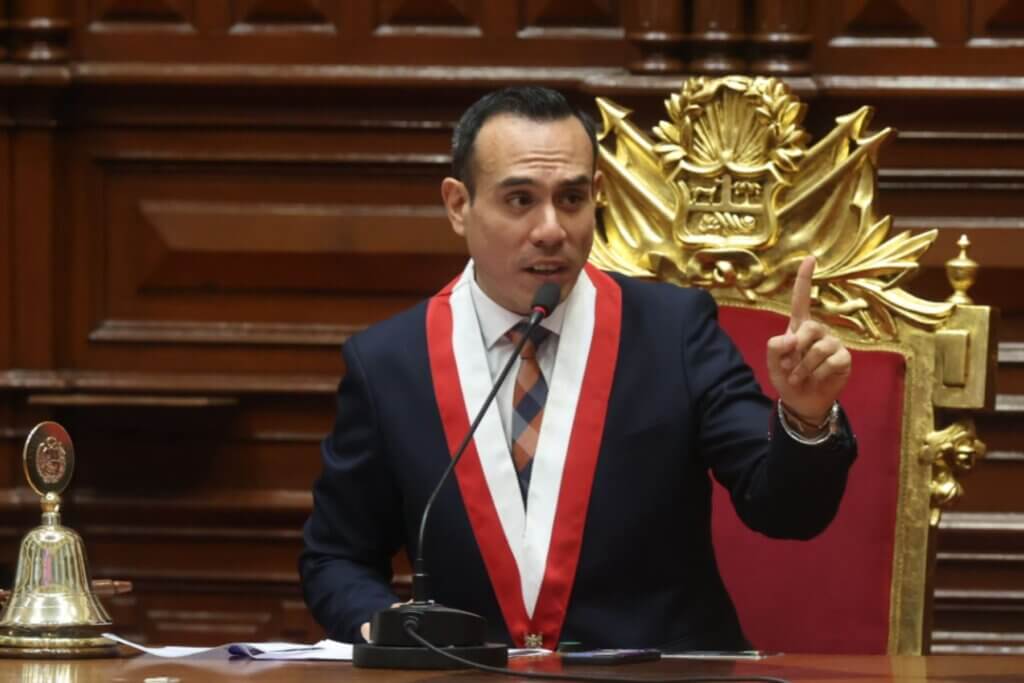Lima, Peru — On the night of April 8, Santiago Contoricón, an Indigenous leader from Peru’s Amazon, went to the window of his home in Puerto Ocopa. A man on the patio had called into the shack asking for him.
As he pulled back the curtain to peer out the window, he was shot once in the head, killing him almost instantly. The assassin slipped off into the darkness.
So far only one suspect in the crime has been captured. Police have attributed Contoricón’s death to retribution from drug traffickers operating in the area who the Indigenous leader often ran afoul of.
With Contoricón’s killing, 20 indigenous leaders and defenders of the Peruvian Amazon have been killed since 2020 by criminals linked to drug trafficking, illegal mining, illegal logging, and land trafficking. And the killings are not isolated to Peru.
Between 2016 and 2021, according to information collected from 11 environmental and human rights organizations, 58 indigenous leaders and residents were killed in the Amazon in Brazil, Colombia, Ecuador, and Peru.
To understand more about the killings of Indigenous in Peru, Peru Reports spoke with Ángel Valerio, president of the Central Asháninka Río Ene, an indigenous political organization that represents the 19 native Peruvian communities of the Ene river basin, in the VRAEM (the Spanish acronym for the Valley of the Apurimac, Ene and Mantaro Rivers), an area of central Peru known for its cocaine production.
Valerio explained that he has received threats since 2019 from dissident groups of the Shining Path (Sendero Luminoso), a Maoist narco-guerrilla group that terrorized the country in the 1980s and 1990s.
According to Peru’s Truth and Reconciliation Commission (TRC), between 1980 and 2000, the Shining Path displaced approximately 10,000 Asháninka, murdered 6,000, and captured 5,000. The Ashaninka are one of South America’s largest Indigenous tribes.
“During the first 10 years since our founding, in 1993, the Shining Path still existed, and we helped rescue our kidnapped brothers. But also to repopulate the native communities that were displaced from their lands,” Valerio explained.
The indigenous leader said that, although “the time of terrorism has passed, there are still remnants of the Shining Path that have called themselves Peru’s Militarized Communist Party, which serves as the armed wing of drug traffickers.”
“In the last 10 years we are witnessing the new threat of drug trafficking and the communities are once again on alert. In Ayacucho, Cusco and Junín there are several communities that have been invaded by coca leaf growers, linked to drug trafficking,” said Valerio.
According to the NGO Global Witness, from 2002 to date, 60 Indigenous leaders and environmental activists have been murdered in Peru.

Some of the latest killings include: Ulises Rumiche, a bilingual teacher, who was shot in the head in the Junín region; Erasmo García Grau, from the Cacataibo ethnic group, who was kidnapped and shot to death, in Ucayali; and Arbildo Meléndez, found with a bullet wound, in the middle of the forest, in Huánuco.
A statement from the Central Asháninka de Río Tambo (CART), another indigenous organization that represents 35 native communities, criticized authorities, saying, “We are alone facing drug trafficking and terrorism.”
“Governments have abandoned us and, as a consequence, criminal organizations linked to illegal economies are murdering our leaders with impunity,” read the message.
Valerio told Peru Reports that the Central Asháninka Río Ene has always tried to “ask for the help of the Peruvian State to stop coca planting and drug trafficking.”
“However, nothing has been done to date,” he explained. “There is no immediate response from the State, there is no protection for environmental defenders, despite the fact that the Ministry of Justice has a mechanism for the protection of environmental and human rights defenders.”
There are approximately 50 communities in the entire Ene river basin that suffer the effects of illegal economies. In each community, there are between 1,000 and 2,000 inhabitants whose quality of life is affected by crime.
“The main consequences of drug trafficking is the reduction of our territories. There is a lack of peace and security. Unfortunately, there are also many young Ashaninkas who participate in illegal acts because there are no job opportunities,” said Valerio.

He said that the area is surrounded by remnants of the Shining Path, as well as illegal loggers. “They threaten our lives, because many times we do not allow them to operate illegally.”
In the Ene River basin there are army posts, but according to Valerio, “they are not doing their job to provide security to all the communities, since they are distant and there is almost no police presence.”
“I am afraid that they will make an attempt on my life at any moment, but I am not the only one threatened. In recent years, other leaders have received harassment and intimidation for defending their territories,” he explained.
Indigenous leader’s request
Valerio said that the Central Asháninka Río Ene seeks “the self-government of the native communities, community development and the protection of their territories and forests.”
“If we do not have a territory, we are nothing, we cannot survive.”
Valerio said that there are indigenous self-defense committees, but unfortunately they only have “ancestral weapons,” so challenging drug traffickers with high-caliber weaponry is lopsided.
During the government of former President Francisco Sagasti (2020-2021), a supreme decree that created a mechanism for the protection of human rights defenders was issued. However, Valerio said that this initiative almost never works “due to lack of budget.”
“We have insisted that President Dina Boluarte attend to the demands of our Ashaninka brothers. We have also asked the Prime Minister to send a budget to this mechanism, so that it works,” she said.
In addition, the leader said that the communities have requested “support from the Army to support our brothers at risk.”
“Unfortunately there are no actions and we have no protection from our government.”
In this context, Central Asháninka de Río Ene’s president, asked the Peruvian State for better “equipment for the self-defense committees”.
“We need training in handling tools, equipment, GPS, drones and other objects to help us with our work. If the government is not going to be present in the remote places, they should at least prepare us to fulfill our role,” he said.

Since 2020, 20 indigenous leaders have died due to illegal economies, but, according to Valerio, “there is no type of reparation, no recognition, no insurance for the families of the victims.”
“The State should watch over the children who have been orphaned,” he said.
According to Valerio, his organization provides technical assistance to improve the quality of life in Indigenous communities.
“We help to plant cocoa, coffee and other products so that many can help their children with health or education issues,” he said.
However, one of the main demands for the State is that investment in development projects remain sustainable over time, according to the leader.
Unfortunately, there is currently no justice for the deaths of indigenous leaders and no effective policies to defend them from the consequences of drug trafficking, land trafficking and illegal logging.
Although the intersectoral mechanism for the protection of human rights defenders has existed since 2021, in practice several of the ministries involved have not actively participated in the meetings.
The feeling of helplessness is evident, especially in the VRAEM, the largest coca-growing basin in Peru where the terrorist remnants are still active.









